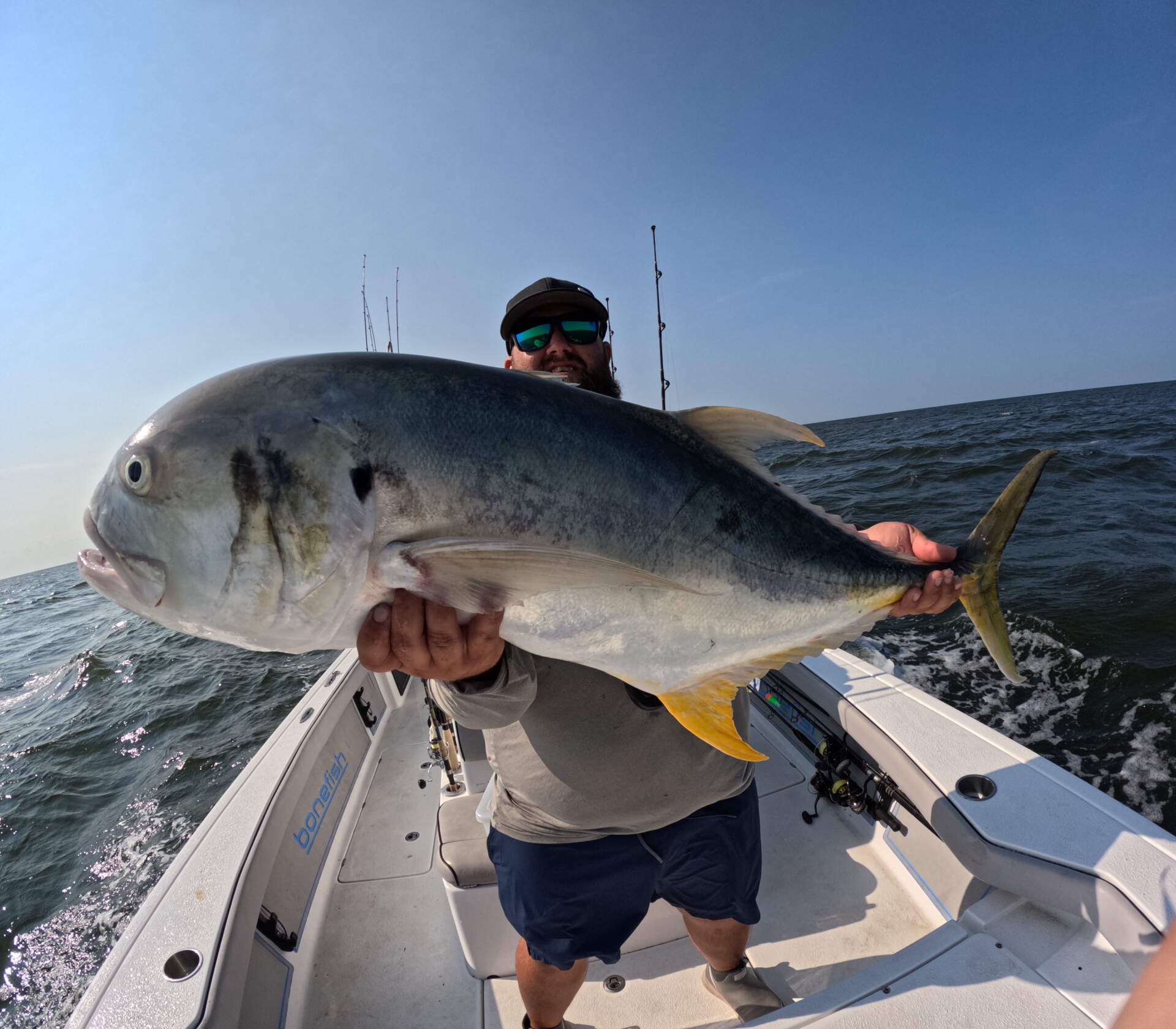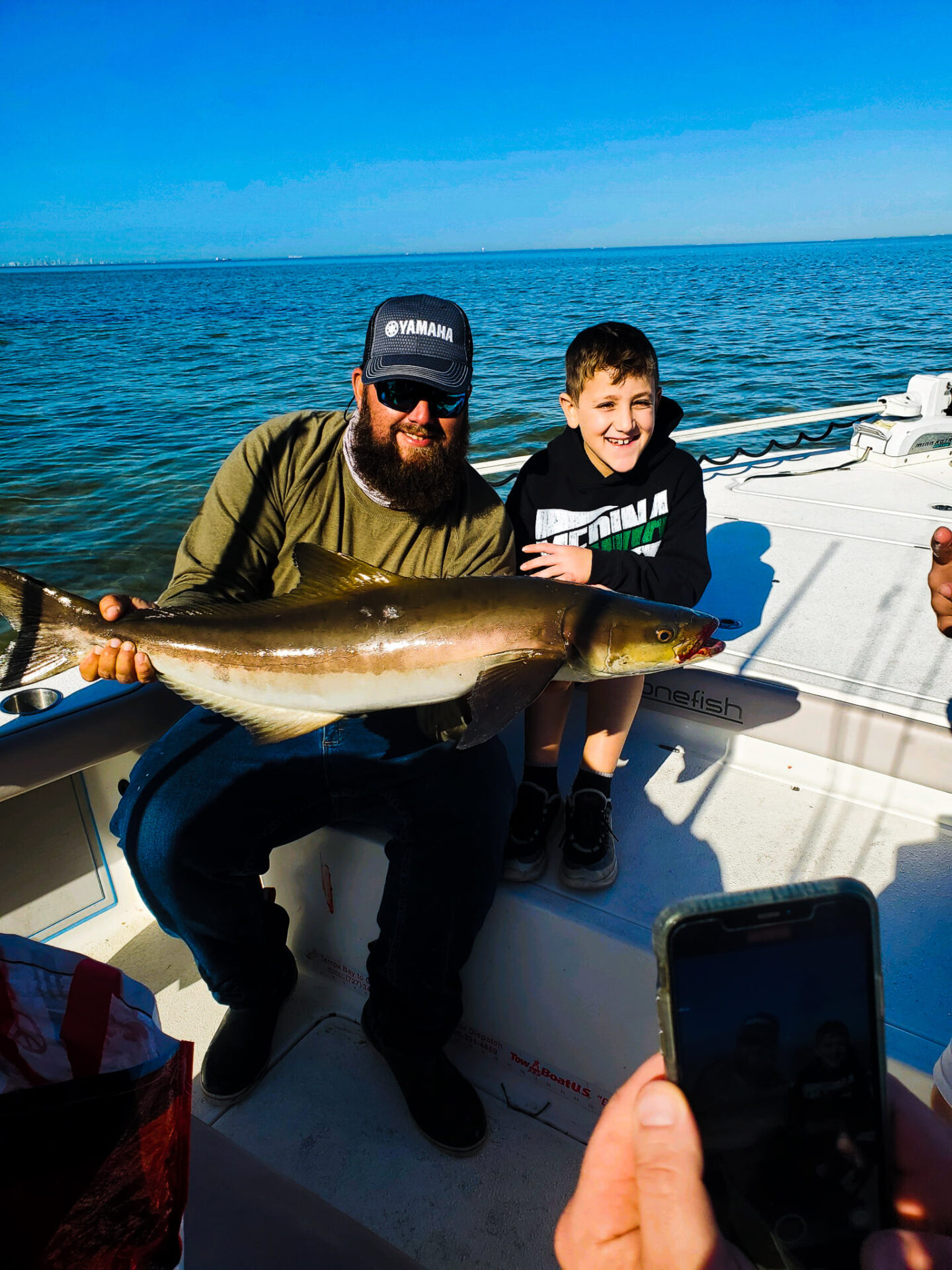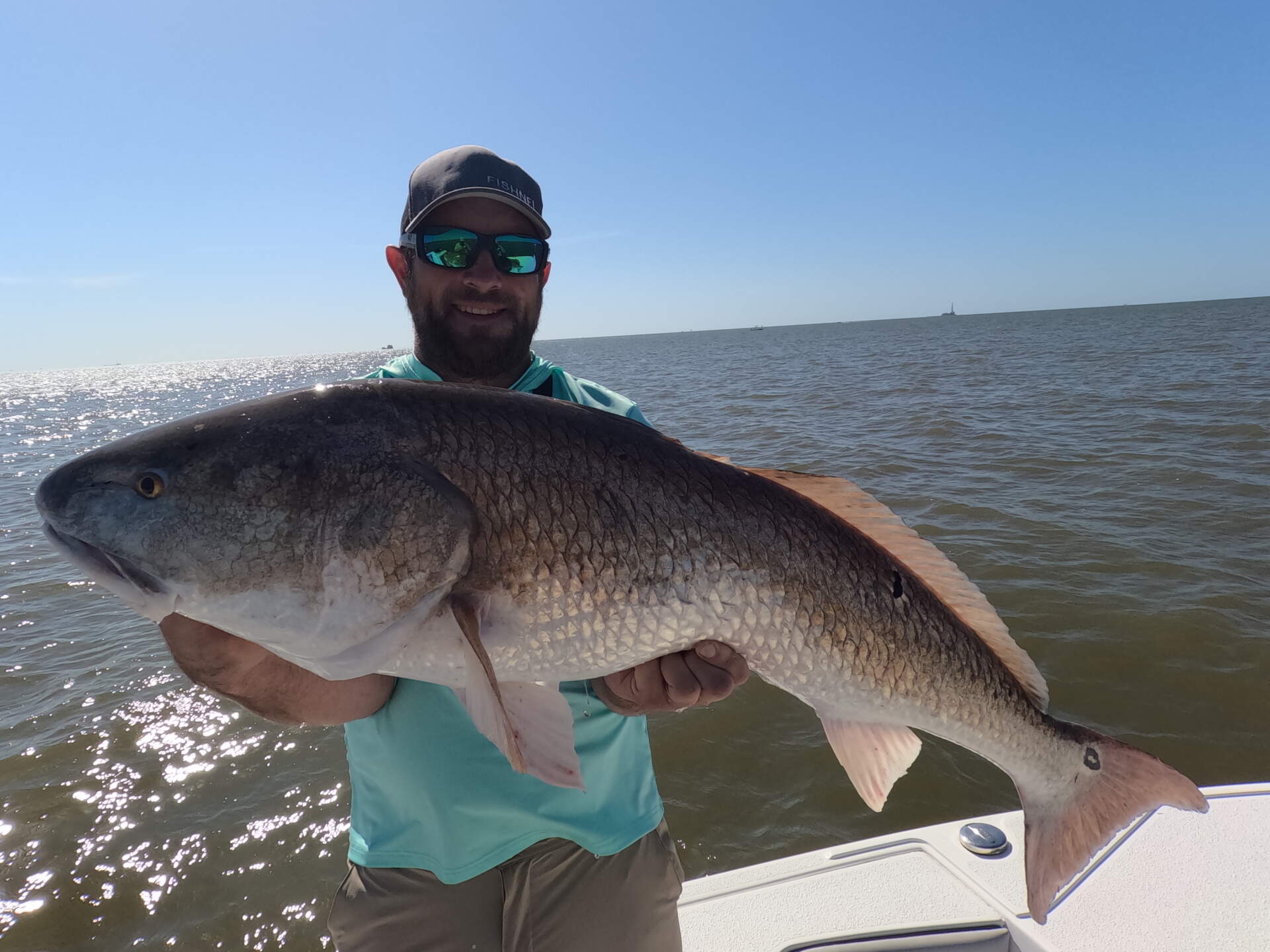Summer in Louisiana is not subtle. By late June, the heat settles in with weight and permanence. Humidity pushes dew points well into the 70s, and midday sun bakes the marshes until even the crabs seem to scurry for shade. For many fishermen, this is a time to rethink the game plan, not give up on it. And one of the most practical shifts is moving from inshore haunts to the open air and deeper water just off the coast. Nearshore fishing during summer isn’t just productive; it’s a more tolerable way to fish through Louisiana’s hottest months.
This isn’t about escaping the heat entirely. It’s about making smart decisions in tough conditions. In the nearshore zone, from the barrier islands to a few miles out, water temps may only be a few degrees cooler than inshore, but those few degrees often make a noticeable difference. Add in steady breezes, more consistent water movement, and the ability to keep moving, and you’ve got a fishery that feels far more manageable in the dog days of July and August.
What Louisiana Summers Really Feel Like on the Water
If you’re fishing anywhere south of the marshline between late June and early September, you’re facing a predictable but brutal combination: daytime highs in the low to mid-90s, humidity regularly pegged above 80%, and heat indexes that push well into the 100s. The sun is punishing, especially when reflected off calm water, and cloud cover, when it exists, is fleeting.
There’s very little overnight relief. Morning lows along the coast rarely fall below 75°F in midsummer, meaning dawn patrols begin in air that’s already thick and warm. By the time the sun clears the horizon, the heat ramps up quickly. Add in the dense, low-elevation landscape of coastal Louisiana, and the inshore backwaters can feel like a convection oven by 10 AM.
But these conditions vary dramatically by zone. Open water areas, especially those outside of tight bay systems, benefit from wind exposure and better circulation. Nearshore waters also offer fewer insects, and better ventilation. All of this adds up to a slightly more forgiving environment.

The Subtle Cooling Effect of Nearshore Zones
It’s important not to overstate the temperature difference between nearshore and inshore areas. The Gulf doesn’t exactly offer cold relief in summer; surface temperatures still climb into the high 80s. But nearshore waters generally remain a few degrees cooler than the backwaters for a few key reasons.
-
Greater water volume and depth allow more thermal stability than shallow marsh flats and muddy banks.
-
Wave and tide action keeps water moving, which limits stagnation and helps oxygenate the environment.
-
Lack of freshwater runoff means fewer warm, nutrient-heavy inflows that raise inshore temps.
-
Breezes are more reliable over open water, which creates evaporative cooling for the fishermen as much as the water.
Fishermen feel this difference. Even if the air temperature remains high, airflow across open decks and the option to keep mobile make long sessions possible without full sunburn or heat exhaustion.
Preparing for the Heat, Even Offshore
Beating the heat isn’t just about location; it’s about preparation. The nearshore Gulf might feel cooler than the marsh, but it’s still a heat-heavy environment. Smart prep separates successful days from miserable ones.
Hydration and cooling:
-
Pack more water than you think you need. On a summer day, you’ll go through at least a gallon per person.
-
Electrolyte mixes or powders help replenish salt and minerals lost through sweat.
-
Cooling towels, UV-blocking neck gaiters, and wide-brimmed hats are practical and essential.
Timing the trip:
-
Morning departures are key. Leave before sunrise and target the first few hours of daylight.
-
Expect the best bite to come early. Many predatory fish feed aggressively at dawn, especially when surface temps are lower.
-
Wind usually picks up mid to late morning, which can either help or hinder depending on distance from shore.
Clothing and sun protection:
-
Quick-dry fabrics in light colors are ideal. Loose fits improve ventilation.
-
Sunscreen is non-negotiable. Reapply every few hours, especially after sweating or wiping down.
-
Consider UV gloves to protect hands during long runs or when casting repeatedly.
Emergency precautions:
-
Heatstroke symptoms can sneak up fast. Watch for confusion, dizziness, nausea, and sudden fatigue.
-
Make sure your vessel’s shade options are usable. A bimini top or portable canopy can be a lifesaver.
-
Have access to cold packs or ice bags to cool down someone quickly if needed.

Fishing the Nearshore Summer Pattern
This isn’t just about staying comfortable. Summer nearshore fishing in Louisiana is highly productive, especially when inshore patterns slow down. The mix of structure, bait, and flowing water along the outer marsh edges, island chains, and reefs creates a dynamic ecosystem full of target species.
Speckled Trout
Specks often move slightly deeper in the heat, holding over oyster reefs, submerged structures, and edges where current flows across bottom changes. Morning topwater can be explosive on calm days, transitioning to soft plastics and live bait on light jigheads as the sun rises.
Redfish
While bulls remain inshore at times, schools also stage nearshore during summer, especially around jetties, passes, and deeper shorelines. Cracked crab, cut bait, and big soft plastics work well for bottom-feeding redfish outside the marsh.
Tripletail
One of the most interesting nearshore summer targets, tripletail hang around crab trap buoys, floating debris, and channel markers. They’re ambush predators and can be caught by sight casting with live shrimp or small jigs.
Spanish Mackerel and Jack Crevalle
Both species thrive in the summer heat and are common nearshore visitors. Look for surface action around bait schools, especially on tide changes. These fish are aggressive and fast, often chasing down spoons, plugs, or flashy jigs.
Sharks
In summer, small blacktips and spinners are often found in the nearshore zone. While not usually targeted, they’re a common catch and can provide a serious fight on lighter tackle.
Mangrove Snapper and Sheepshead
Around oil platforms, rocks, and jetties, both species stage in the shade and structure. A light line, small hook, and live shrimp often get the job done, especially on a slack tide.
Navigating Weather and Conditions
Louisiana’s summer pattern isn’t just about heat; it’s also about storm timing. Gulf coast weather is defined by its instability in July and August. Clear skies in the morning can give way to dark thunderheads by lunch.
-
Pop-up storms are the norm. They build fast and often pass just as quickly, but they can carry lightning and gusty wind. Radar apps and marine forecasts are must-haves on any summer trip.
-
Wind patterns change throughout the day. Morning calm can turn into a stiff southerly breeze by late morning, making runs home rougher than the outbound trip.
-
Cloud cover offers brief relief from the sun but can reduce visibility for sight casting.
Knowing when to move, when to drift, and when to call it early is part of summer fishing judgment. The nearshore zone gives you more flexibility to adapt. You can shift toward a reef, hug the coast, or ride a breeze to the next zone.

Smart Strategies to Extend the Day
Many summer days on the water end early. But the nearshore zone offers ways to stretch the fishing window without getting burned out.
-
Fish moving structure: Tide lines, grass mats, and drifting bait can reveal active zones without anchoring up and baking in one spot.
-
Keep baits low: In hot water, fish often stay closer to bottom structure or thermoclines. Drop-shot rigs, Carolina rigs, or heavy jigheads help reach them.
-
Use the boat’s motion: Drift fishing keeps airflow up and prevents heat stagnation. Trolling can also produce fish while offering a break from casting.
-
Don’t ignore the afternoon: If you’ve got shade and stamina, an evening bite nearshore can be strong. As the sun dips, bait rises again and many predators feed aggressively before nightfall.
Why This Zone Works
The nearshore waters off Louisiana’s coast sit in a productive transition zone. They’re close enough to reach quickly, but open enough to escape the worst of the marsh heat. They hold resident fish and attract migratory species. They’re dynamic, constantly shifting with wind and tide. And in the summer, they offer an edge. It may be slight, but it matters for staying on the water longer, catching more fish, and avoiding the worst of the heat.
If you fish here regularly, this becomes part of your seasonal rhythm. When the marsh cooks, you shift your mindset and run just a little farther. When the air turns still, you angle into the breeze. You don’t fight the summer; you fish through it.
When You’re Ready to Fish Smarter, Not Hotter
This kind of fishing, adaptable, deliberate, and tuned into Louisiana’s summer rhythm, is what we do best. At FishnLA, we’ve built our charter service around the real conditions of this fishery, not just the postcard versions. We run out of Venice, where nearshore waters stay rich with life even in the deepest summer. From trout at first light to reds crashing bait on a moving tide, we fish hard and smart all year long.
Join us out here and beat the heat the right way. Book your Venice charter with FishnLA today and fish the coast on your terms.

